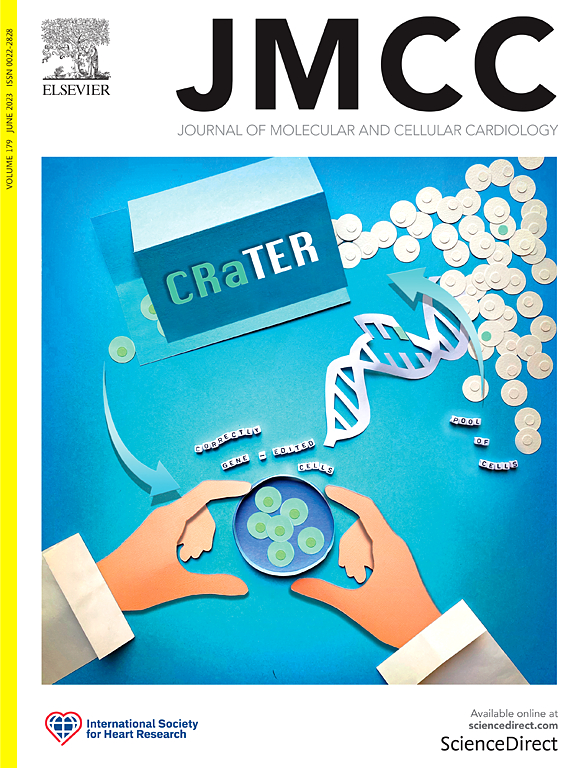平滑肌特异性HuR敲除可减轻血管钙化。
IF 4.7
2区 医学
Q1 CARDIAC & CARDIOVASCULAR SYSTEMS
引用次数: 0
摘要
血管钙化是动脉粥样硬化、慢性肾病、血管损伤和衰老的共同病理特征。人抗原R (Human antigen R, HuR)是一种广泛表达的rna结合蛋白,在体内平衡和癌症、心血管疾病等病理状况的调节中起着关键作用,但在血管钙化中的作用尚不清楚。在这项研究中,我们制造了平滑肌特异性HuR敲除(HuRSMKO)小鼠来研究HuR在血管钙化中的功能。钙化条件下,HuR水平升高,高磷酸盐水平通过激活转录因子4 (ATF4)增加了HuR的表达。HuR过表达加剧了高磷酸盐诱导的钙化,而HuR缺乏抑制高磷酸盐诱导的VSMCs钙化。体内平滑肌特异性敲除HuR可防止血管钙化。此外,用HuR抑制剂CMLD-2治疗可显著减轻小鼠的钙化。从机制上讲,HuR直接结合runt相关转录因子2 (Runx2) mRNA,增加其稳定性和蛋白表达,促进血管钙化。这些发现表明,HuR通过Runx2的转录后调控,在血管钙化的调控中起着关键作用。本文章由计算机程序翻译,如有差异,请以英文原文为准。

Smooth muscle-specific HuR knockout attenuates vascular calcification
Vascular calcification is a common pathological feature of atherosclerosis, chronic kidney disease, vascular injury and aging. Human antigen R (HuR), a widely expressed RNA-binding protein, plays a key role in the regulation of homeostasis and pathological conditions such as cancer and cardiovascular disease, but its role in vascular calcification remains unclear. In this study, we generated smooth muscle-specific HuR knockout (HuRSMKO) mice to investigate the function of HuR in vascular calcification. The HuR level increased under calcifying conditions, and high phosphate levels increased HuR expression via activating transcription factor 4 (ATF4). HuR overexpression exacerbated high phosphate-induced calcification, whereas HuR deficiency inhibited high phosphate-induced calcification in VSMCs. Smooth muscle-specific knockout of HuR protected against vascular calcification in vivo. Additionally, treatment with the HuR inhibitor CMLD-2 significantly attenuated calcification in mice. Mechanistically, HuR binds directly to Runt-related transcription factor 2 (Runx2) mRNA, increasing its stability and protein expression, which facilitates vascular calcification. These findings demonstrate that HuR plays a critical role in the regulation of vascular calcification through the posttranscriptional control of Runx2.
求助全文
通过发布文献求助,成功后即可免费获取论文全文。
去求助
来源期刊
CiteScore
10.70
自引率
0.00%
发文量
171
审稿时长
42 days
期刊介绍:
The Journal of Molecular and Cellular Cardiology publishes work advancing knowledge of the mechanisms responsible for both normal and diseased cardiovascular function. To this end papers are published in all relevant areas. These include (but are not limited to): structural biology; genetics; proteomics; morphology; stem cells; molecular biology; metabolism; biophysics; bioengineering; computational modeling and systems analysis; electrophysiology; pharmacology and physiology. Papers are encouraged with both basic and translational approaches. The journal is directed not only to basic scientists but also to clinical cardiologists who wish to follow the rapidly advancing frontiers of basic knowledge of the heart and circulation.

 求助内容:
求助内容: 应助结果提醒方式:
应助结果提醒方式:


